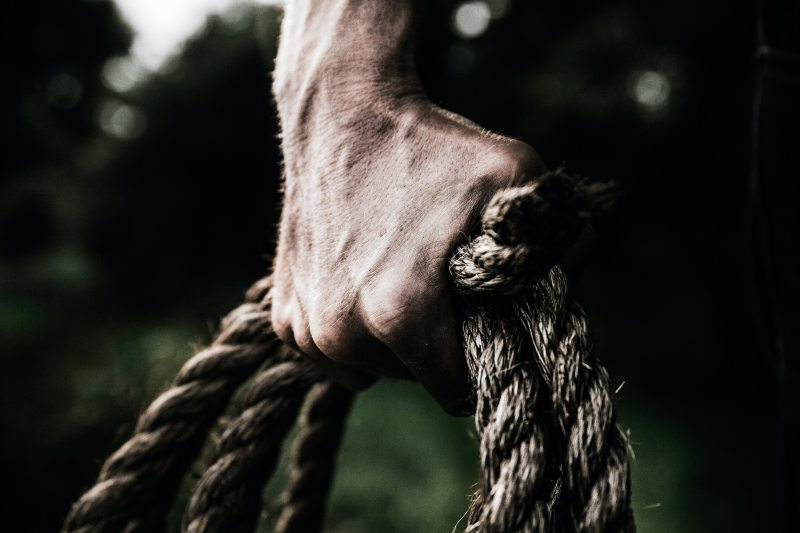
There are 101 things to tie up in the backcountry. Perhaps you’re setting up a ridgeline for a camping tarp, or you need to hang a bear bag to avoid your favorite snacks being snaffled overnight. Whatever it is, we know that the rope you keep in your bag is a lifeline and an essential part of being an outdoorsman. But there’s more to tying things up than just learning a simple knot and relying on it for every situation. There are thousands of knots to choose from, and given a little time, you can always improvise one of your own.
Each knot has its own uses and will come with a raft of benefits and drawbacks and should be favored in certain situations. This means that to be a successful outdoorsman, you need to have at least a small arsenal of knots up your sleeve to pull out in the right situation.
In the 15 years or so I’ve been tying things together, these six knots have been by far the most common I’ve needed. It’s rare that I can’t fix a situation with one — or a combination — of these types of knots. Grab yourself a length of rope and spend some time getting to grips with the following.

Square knot (aka reef knot)
The square knot — also known as a reef knot — is a simple way to attach two ropes of equal thickness together. Because of its simplicity, most people learn to tie a square knot before any other knot when they learn to tie their shoes.
Unfortunately, the square knot can’t be trusted. It’s a secure knot when laid flat against a surface, but it is known for coming untied. This is most common when you’re using a modern, sheathed rope. Because of this, the square knot is used in situations where there are no major consequences to your knot coming untied. It might just be a bit irritating. You can use a square knot to tie up a bundle of firewood or to tie up a bandage.
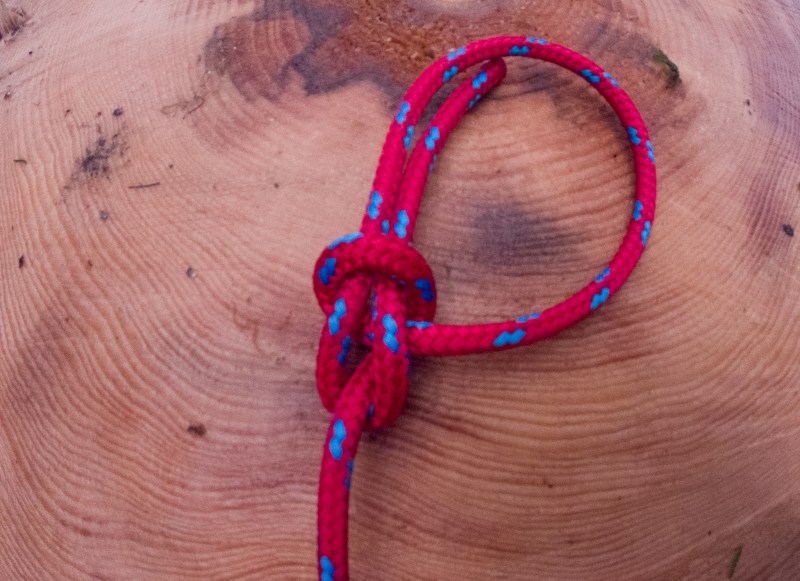
Bowline knot
The king of knots. The bowline is a firm favorite when it comes to creating a loop at the end of your rope, especially if you need to haul a heavy load. The reason for this is simple — no matter how much you load a bowline knot, you can always untie it. If you were a Boy Scout, you most likely learned how to tie a bowline knot with a lot of talk about a rabbit coming out from a hole and around a tree.
A bowline can also be tied one-handed, so you can hold your load with one hand and tie your knot with the other. The bowline knot has endless uses, from hanging a bear bag to anchoring your camping tent guide ropes to a tree.

Double figure-eight knot
The double figure-eight knot is almost unanimously agreed to be the best knot for climbing. As you load the figure-eight knot, it tightens on itself, and there is no risk of it coming untied — so long as you tie a stopper knot. The figure-eight knot can be tough to untie after it’s been heavily loaded, so it is generally only preferred when you have to be 100% certain your knot isn’t going to come undone.
When you learn to tie a figure-eight knot, we recommend learning to tie it on the bite — a simple double — and a rethreaded figure eight, which allows you to tie the knot around an object. Figure-eight knots are mainly used by climbers but can be used to create loops at the end of your rope where a bowline won’t suffice.
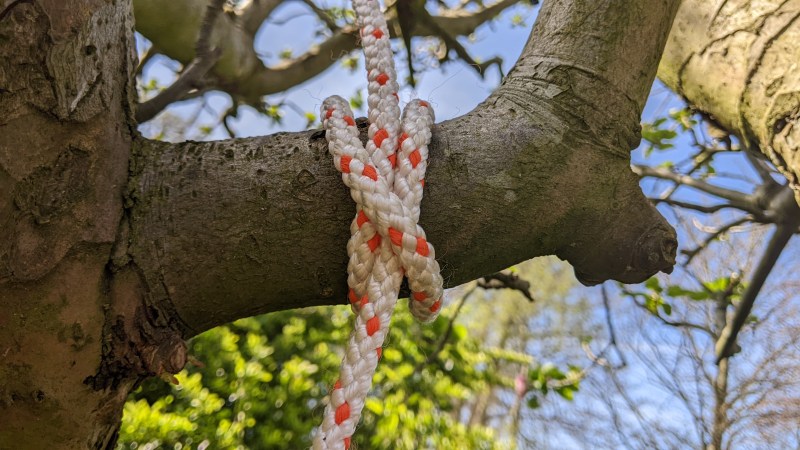
Clove hitch
The clove hitch knot is a simple bind that is easy to tie and can be adjusted quickly without being untied. It’s widely considered to be one of the most important knots, and is often used as part of an anchoring system. You can tie a clove hitch around an object or as a freestanding knot that you can clip through with a karabiner. We suggest you brush up on both methods when you learn to tie a clove hitch to give you the most versatility.
As it’s easily adjusted, the clove hitch is often used to lengthen and shorten anchor positions for belaying. A word of caution here — the clove hitch can slide, and its use is questionable around anything other than a round object, so always back up your clove hitch. This adjustability makes the clove hitch useful as part of a system for hanging a hammock, too.
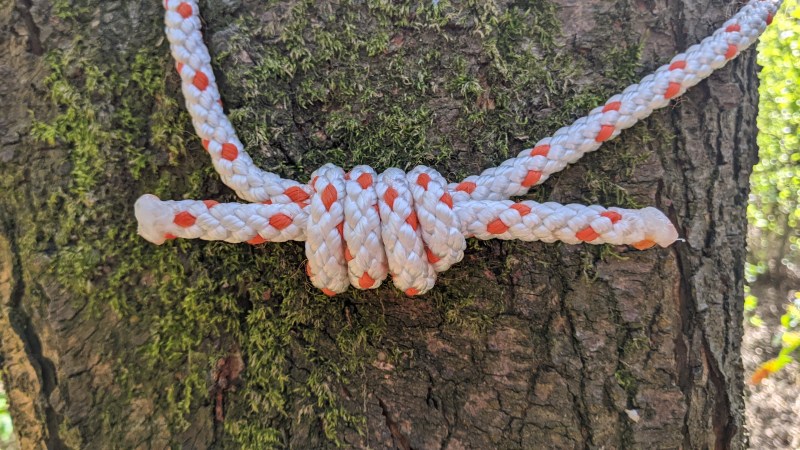
Double fisherman’s knot
When the square knot can’t be trusted, the double fisherman’s knot is a secure way of attaching two ends of a rope together. If you’ve spent any time climbing, then you’ll recognize the double fisherman’s knot as two stopper knots back-to-back. As with everything that seems oh-so-simple, this knot can be tied wrong, and the results can be catastrophic. We recommend plenty of practice after you learn to tie a double fisherman’s knot.
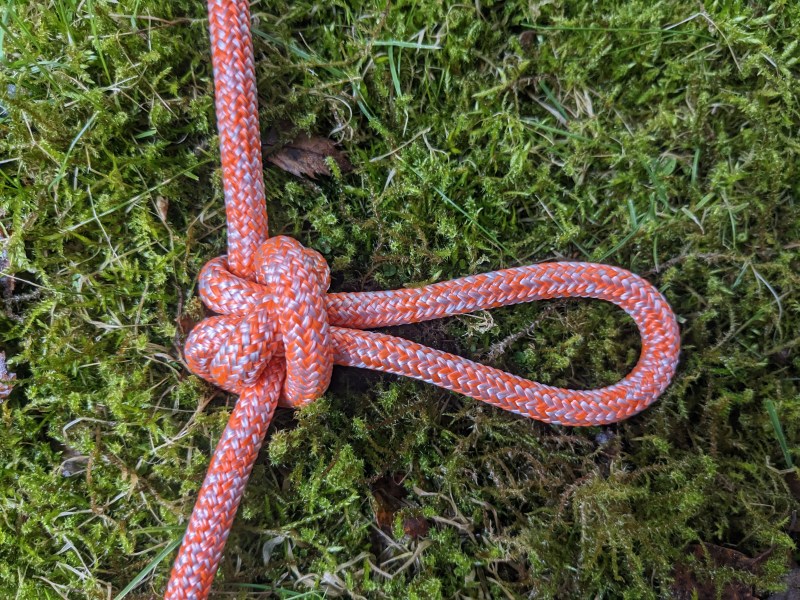
Alpine butterfly
The alpine butterfly creates a fixed loop in the middle of a length of rope. While this can be achieved with a number of other knots, the alpine butterfly knot has two main advantages. Firstly, it can be three-way loaded. This means you can safely put a weighted load on the loop itself while also loading the two ends of the rope. Secondly, the Alpine Butterfly won’t bind on itself and can always be untied after being loaded, so you aren’t left with a rope full of knots at the end of your trip.
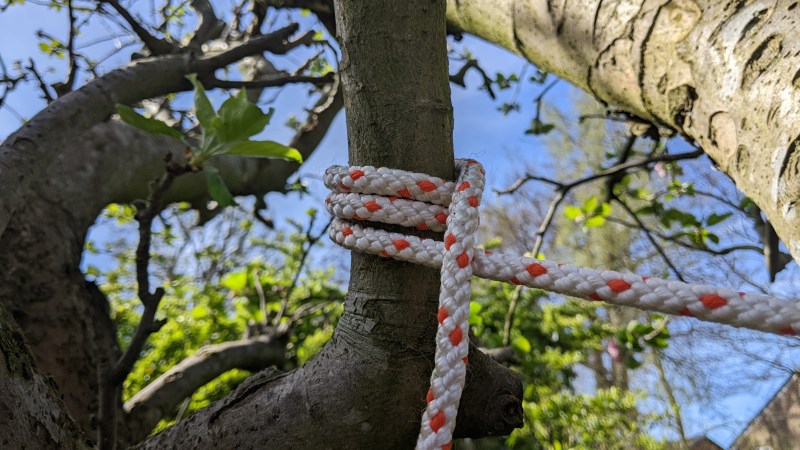
Bonus: The no-knot
When is a knot not a knot?
Our bonus knot is, well, it blurs the line. If a knot is just a way of using friction to secure a rope, then why not just use that friction? If you wrap a rope around an object — a tree or pole — three times and pull the end tight, the friction alone tends to hold it securely.
We wouldn’t recommend entrusting your life to this “knot,” but it’s a great makeshift option if you need to quickly secure a rope or if you are regularly raising and lowering an object like a bear bag, though obviously not overnight. This knot relies on friction and will work better with a thicker rope and rougher trees or poles to wrap it around.
Editors' Recommendations
- Hiking in hot weather: The essential rules everyone should follow
- Here’s everything you need to pack for a trip to Yellowstone National Park
- Upgrade your everyday carry with these best-in-class, fast-action flipper knives
- Stock up on hiking and camping gear at the best places to shop for outdoor equipment deals
- Yellowstone National Park issues a new warning (and we can’t believe people need to be told this)




